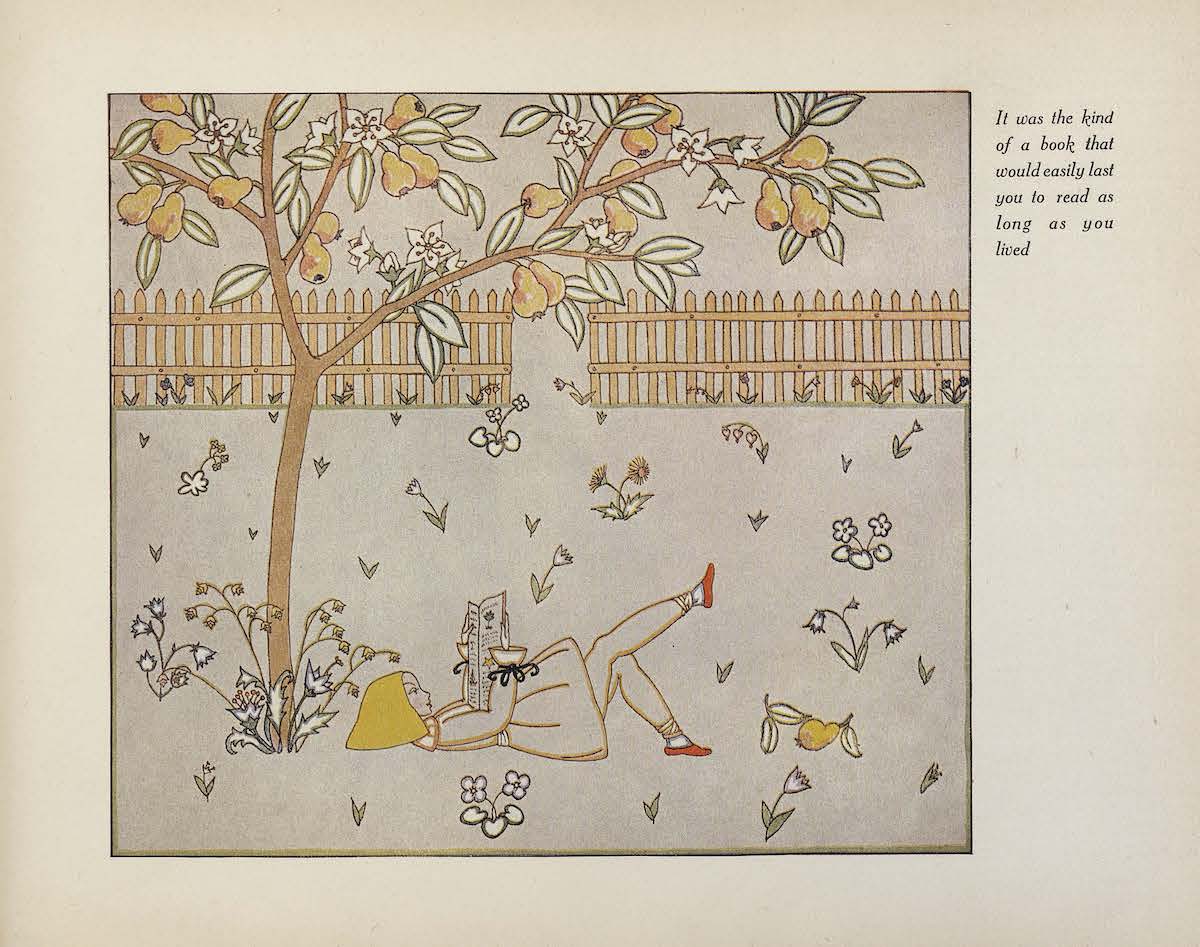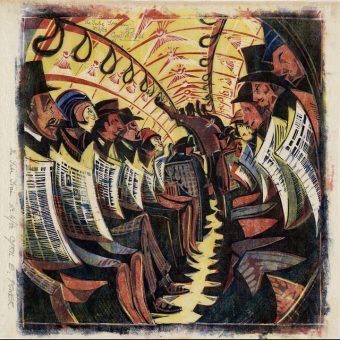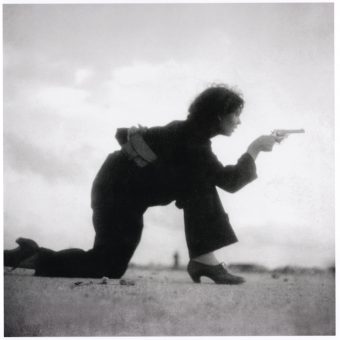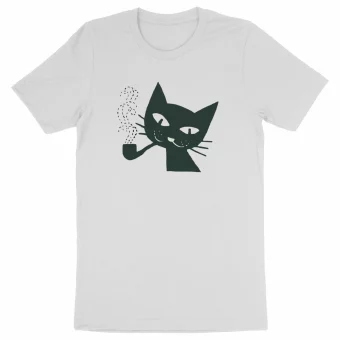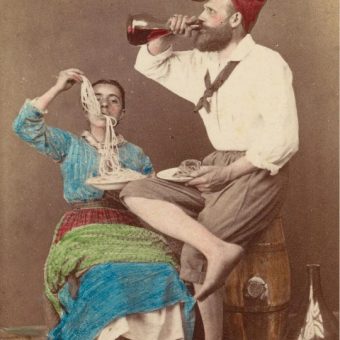‘The earth is heavy and opaque without dreams.”
– Anaïs Nin
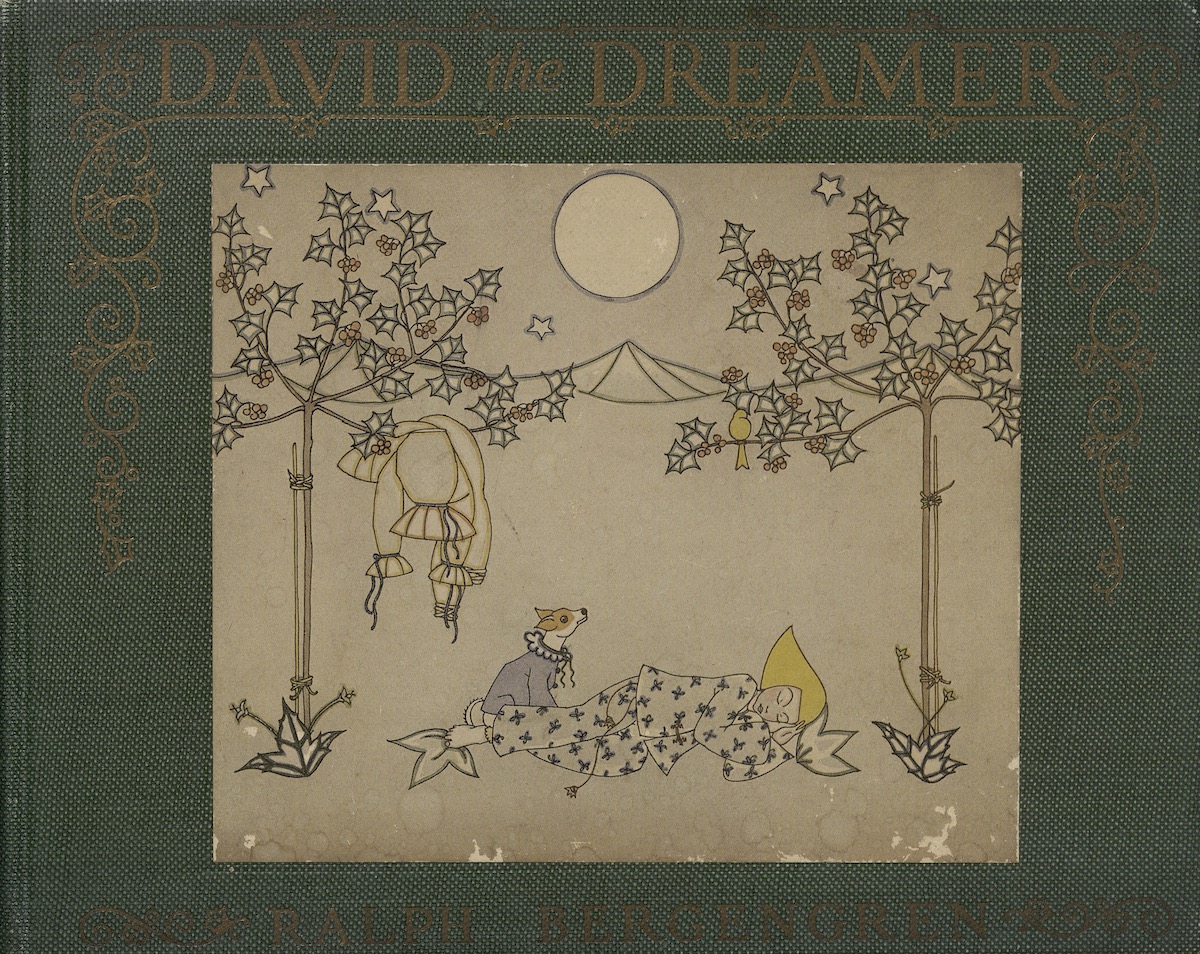
Published in 1922 with illustrations by Tom Seidmann-Freud, Ralph Bergengren’s David the Dreamer: His Book of Dreams tells the story of a boy’s dreams for his pet dog Fido’s third birthday. David finds himself in a series of adventures in which he meets a talking rabbit, swims in a goldfish bowl, walks among snow-capped mountains and pirate Blackbeard’s buried treasure.
The books begins in a dream. We know it’s a dream, and David knows he’s dreaming, because he’s wearing a white suit, “like the Clown’s in a Circus, that he often wore in dreams and never anywhere else”. Fido is also dressed in a white suit with neat ruffles around his legs, and the neatest ruffle of all around his tail… Fido always spoke doggerel in dreams, and David was not at all surprised when he said, jumping up and down and wagging his ruffled tail:
This is a great day for me.
This is my birthday, you see.
Last year I was two,
And this year I am three.
And so what say you
To a birthday partee?
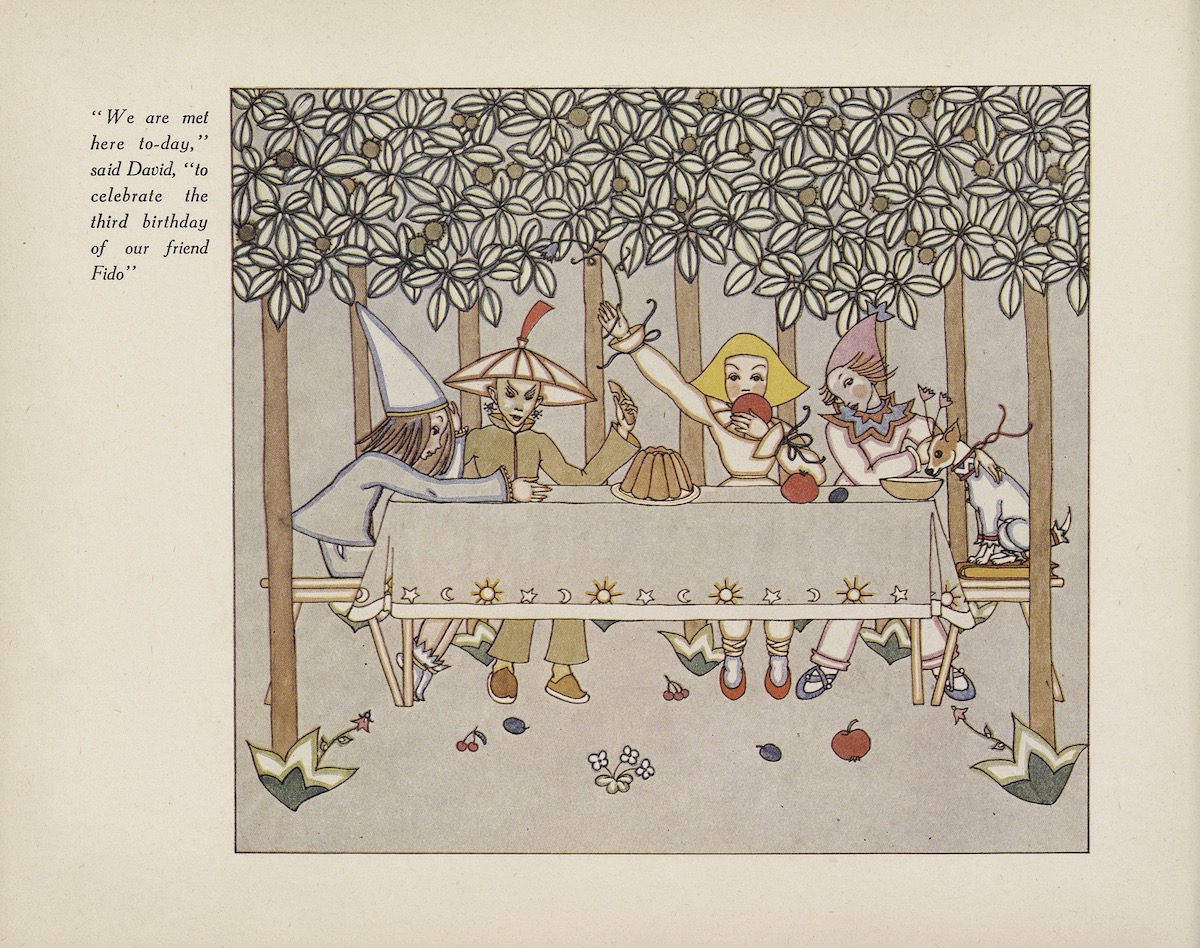
Fido’s birthday party in David the Dreamer, 1922
Before your read the book, Bergengren has a word about how it can be understood:
The odd thing about this book was that when David began reading the book, the book began reading David… The letters ran around, and changed places, and many of them jumped off the book out of sight… It was a queer book. And another odd thing about it was the way the leaves left as soon as you had read them. When you started to turn a leaf over, it just disappeared. But there were always plenty of new leaves, so that it was the kind of book that would easily last you to read as long as you lived.
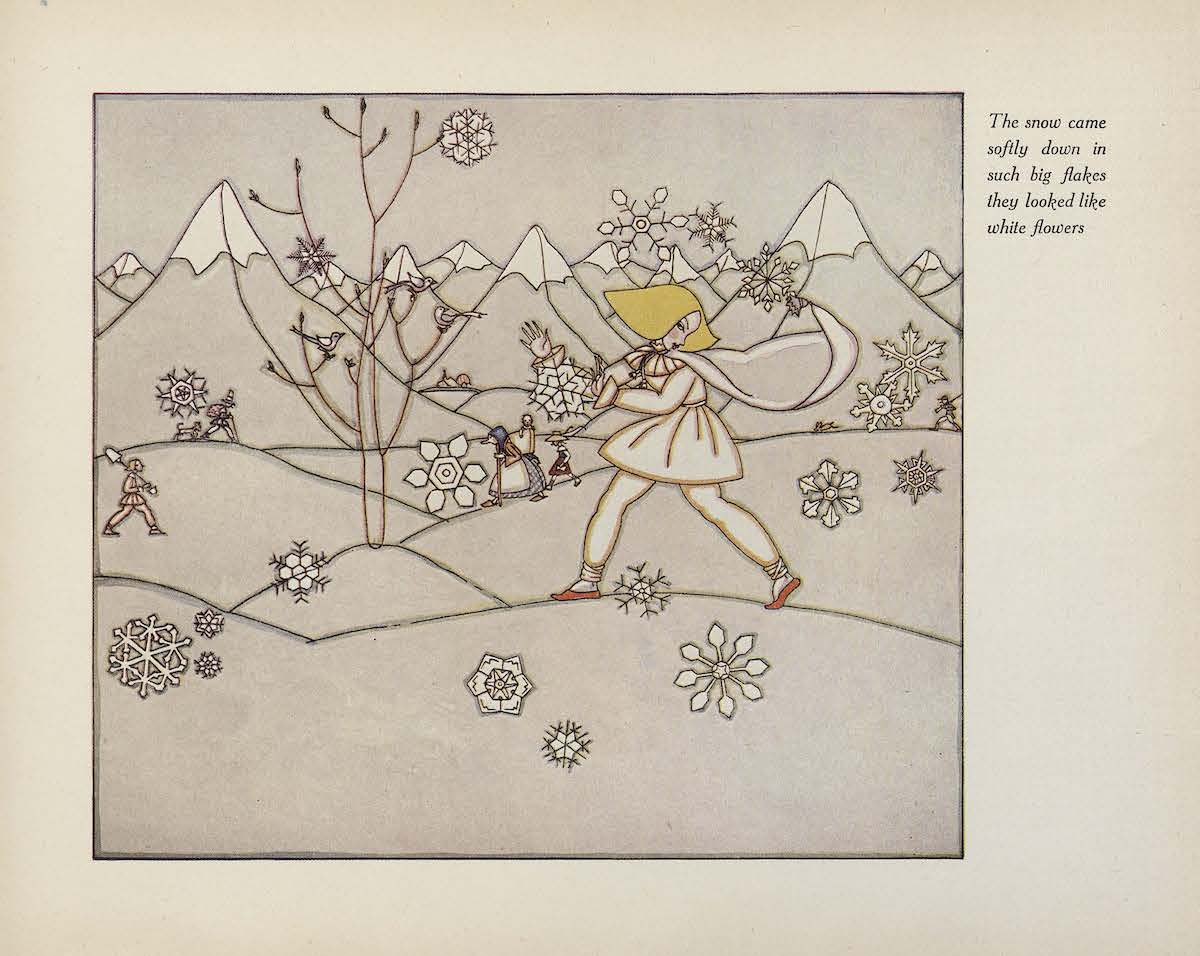
Page 11, illustration by Tom Seidmann-Freud
And there’s the illustrator, whose work we’ve featured before. With this children’s book, Tom Seidmann-Freud, Sigmund Freud’s niece, introduced herself to the American public as an illustrator for the first time. Up to that point, only one of her books had been published in Germany (Das neue Bilderbuch, 1918). Given her family background, it seems no coincidence that she chose a “dream book”. The large illustrations, still delicately drawn and in bright colours, already display the typical formally reduced style that would later become even more evident in the artist’s work—not least due to the influence of the Bauhaus, where Tom Seidmann-Freud studied.
David followed Fido across the lawn to the barn, where Fido’s own house stood beside the barn door; and when Fido went into his house David got down on his hands and knees and squeezed in afterhim. It was the first time he had ever been in Fido’s house, and he was surprised to see how conveniently it was arranged. Fido’s dining room was on one side of the hallway, and his bedroom on the other; and beyond the bedroom was a shower bath, like David’s father’s but much smaller.
Fido’s bed was a four-poster, and David’s mother would have been delighted to see how nicely it was made up with a many-colored crazy quilt properly folded across the bottom. It was a very neat house, and David got a glimpse of the pantry with a row of tin boxes marked BEEF BONES, CHICKEN BONES, MUTTON BONES, and OTHER BONES, and a porcelain sink with hot and cold water to wash the dishes. He would have liked to stay longer and look round the house, but Fido trotted through the hall and out at the back door, which also surprised David and made him wonder what had become of the barn. But it was pleasant to be able to stand up again on his feet.
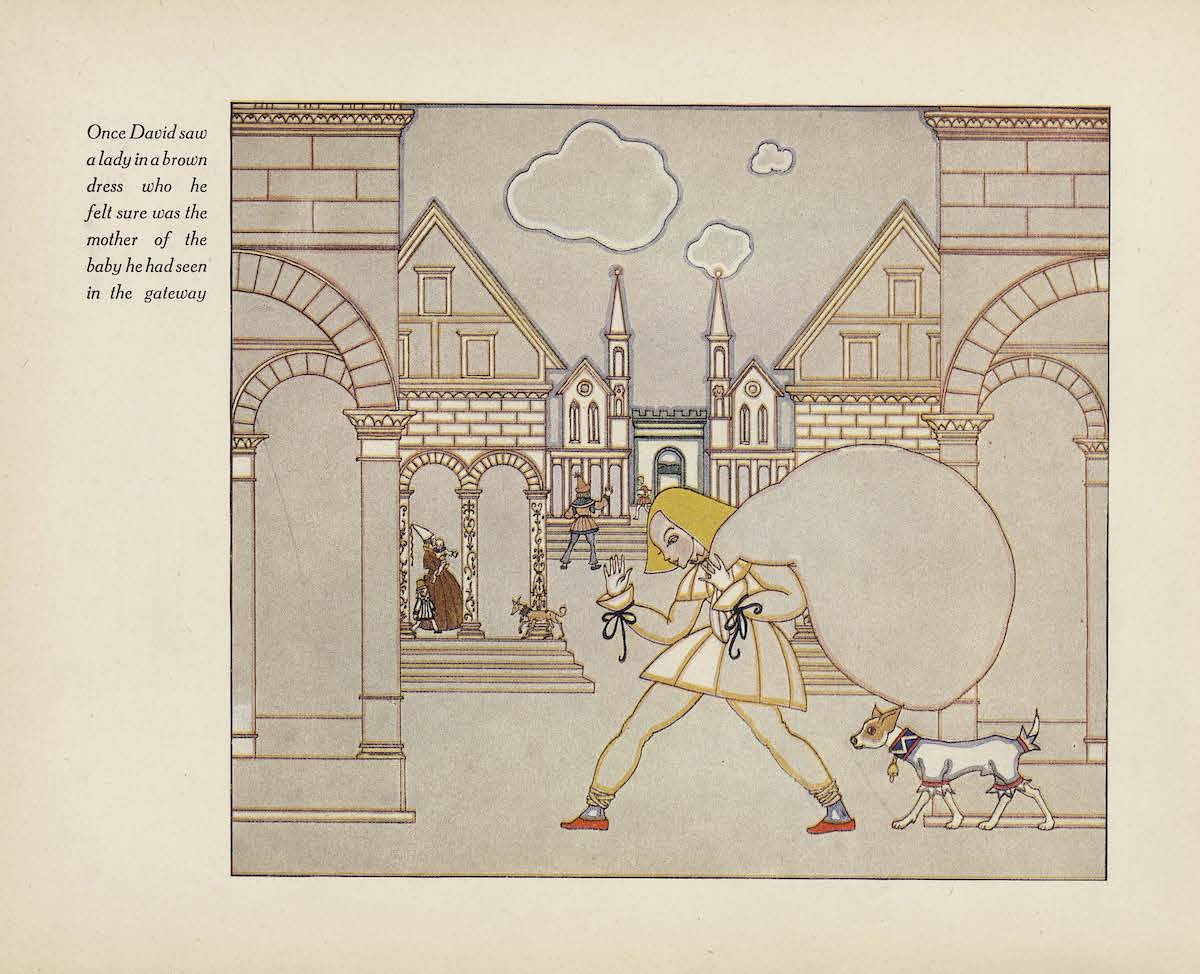
Page 24, illustration by Tom Seidmann-Freud
About the author:
Ralph Bergengren, born in 1871, was an American author and editor known for his insightful contributions to early 20th-century literature. His writing, characterized by gentle humor and satirical wit, often explored the intricacies of domestic life and social customs. Bergengren s work captured the essence of everyday life, offering both critical observations and lighthearted commentary. He was particularly adept at reflecting on the norms and rituals that shaped societal behavior, weaving together humor and reflection in his prose. In 1900, he married Anna Farquhar, and together they shared a life that was intertwined with Bergengren’s literary pursuits. His works remain valued for their wit, charm, and perceptiveness. Bergengren passed away in 1947 at the age of 76, leaving behind a legacy of thoughtful and engaging writing that continues to be appreciated by readers interested in the social dynamics of his time. His works provide a window into the cultural landscape of the early 20th century, making significant contributions to the literary discourse of the period.
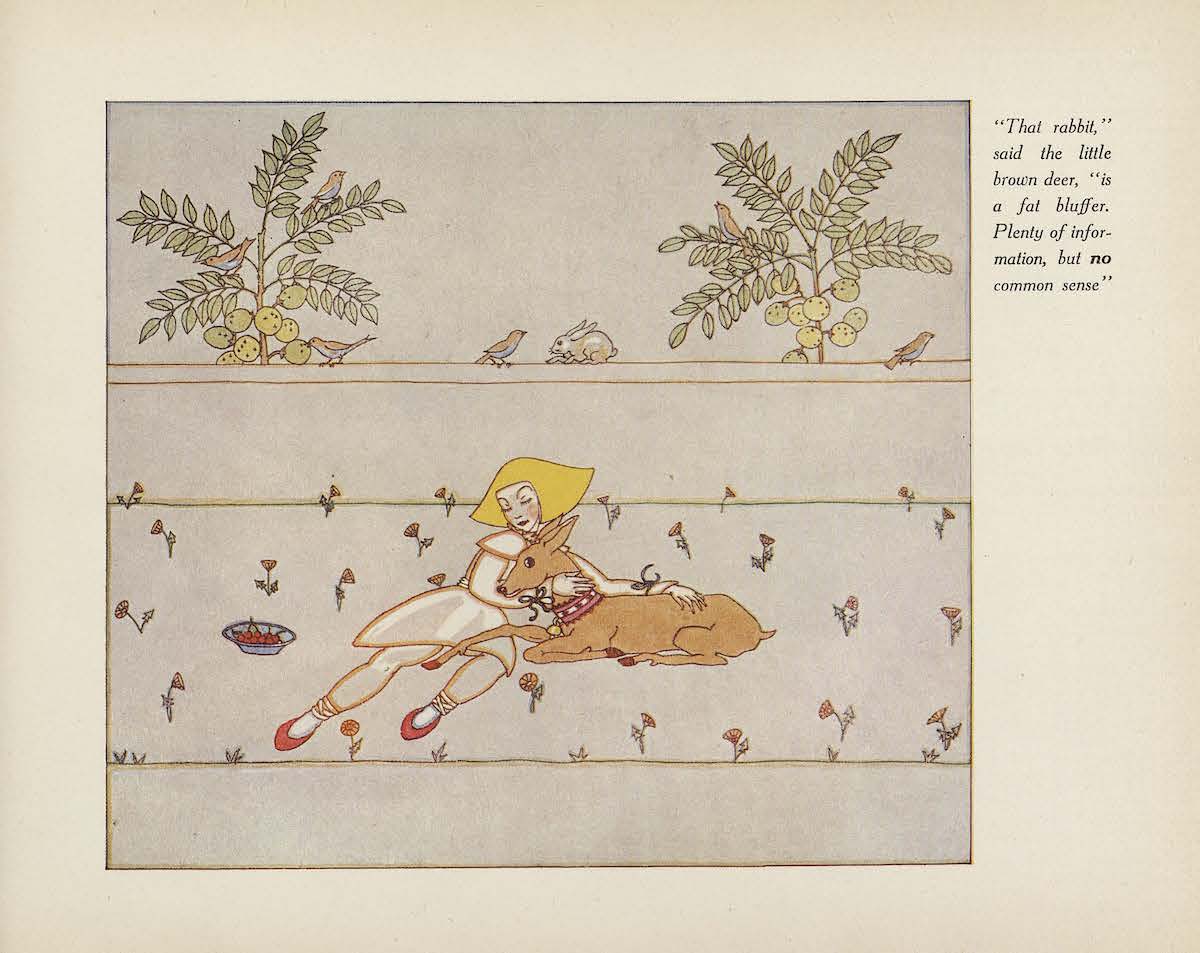
Page 33, illustration by Tom Seidmann-Freud
“Quite often in dreams it is the hare that shoots the sportsman.”
– Sigmund Freud, The Dream-Work
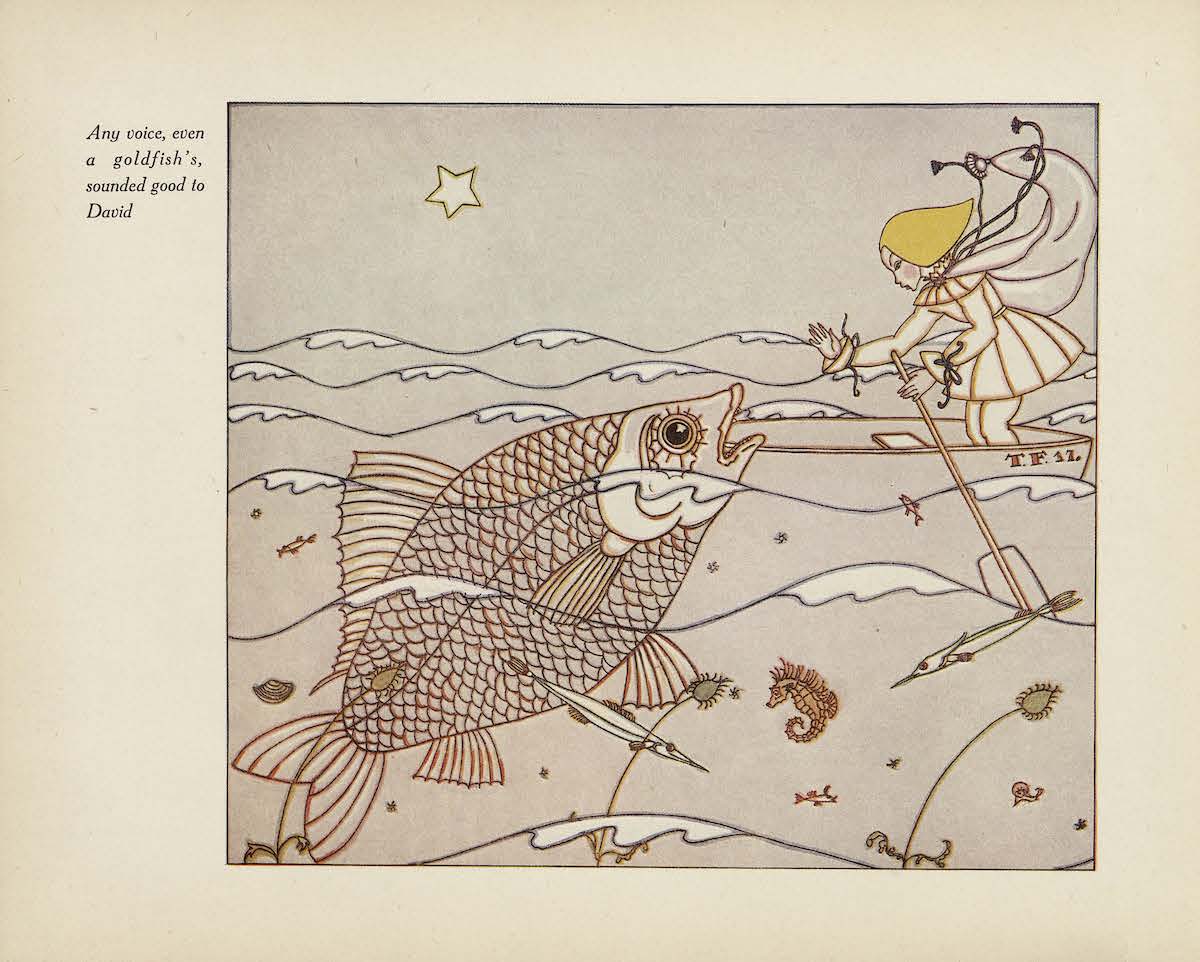
Page 36, illustration by Tom Seidmann-Freud
In the bowl an ocean lies —
If you were the proper size,
If you were so very small
You could scarce be seen at all;
If you had a little boat,
You could set yourself afloat
On the waves that rise and roll
In that placid-looking bowl.
There are waves, and fishes too,
Quite invisible to you
When you are your natural size,
Looking at it with your eyes.
But it changes to your sight
When you are a tiny mite,
Wondering what lands may be
Way across the Goldfish Sea.Very-Little-David stood on the edge of the goldfish bowl. A beach of glass, like the shelf in the bathroom where you put things when you wash your face, but miles and miles long, stretched away as far as he could see on either side of him.
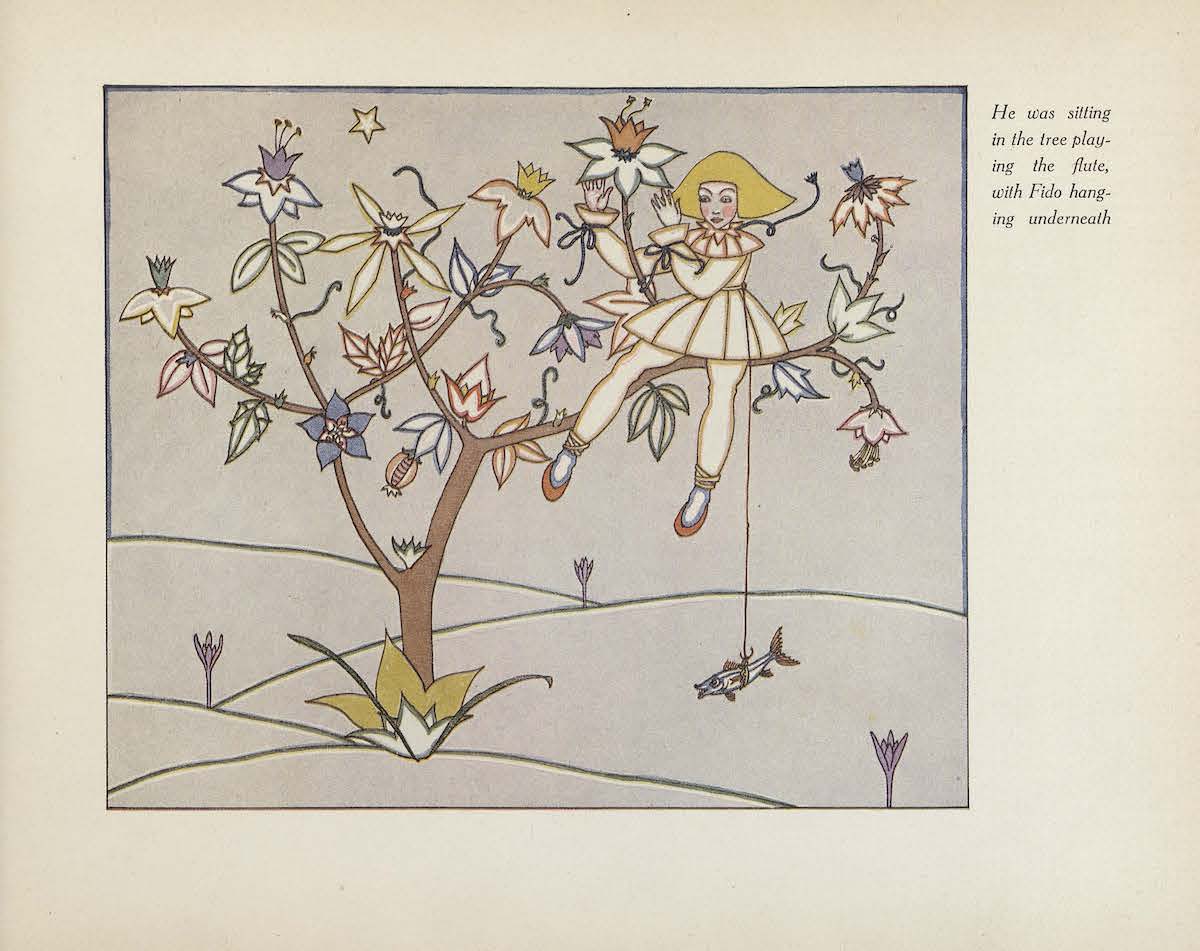
Page 43, illustration by Tom Seidmann-Freud
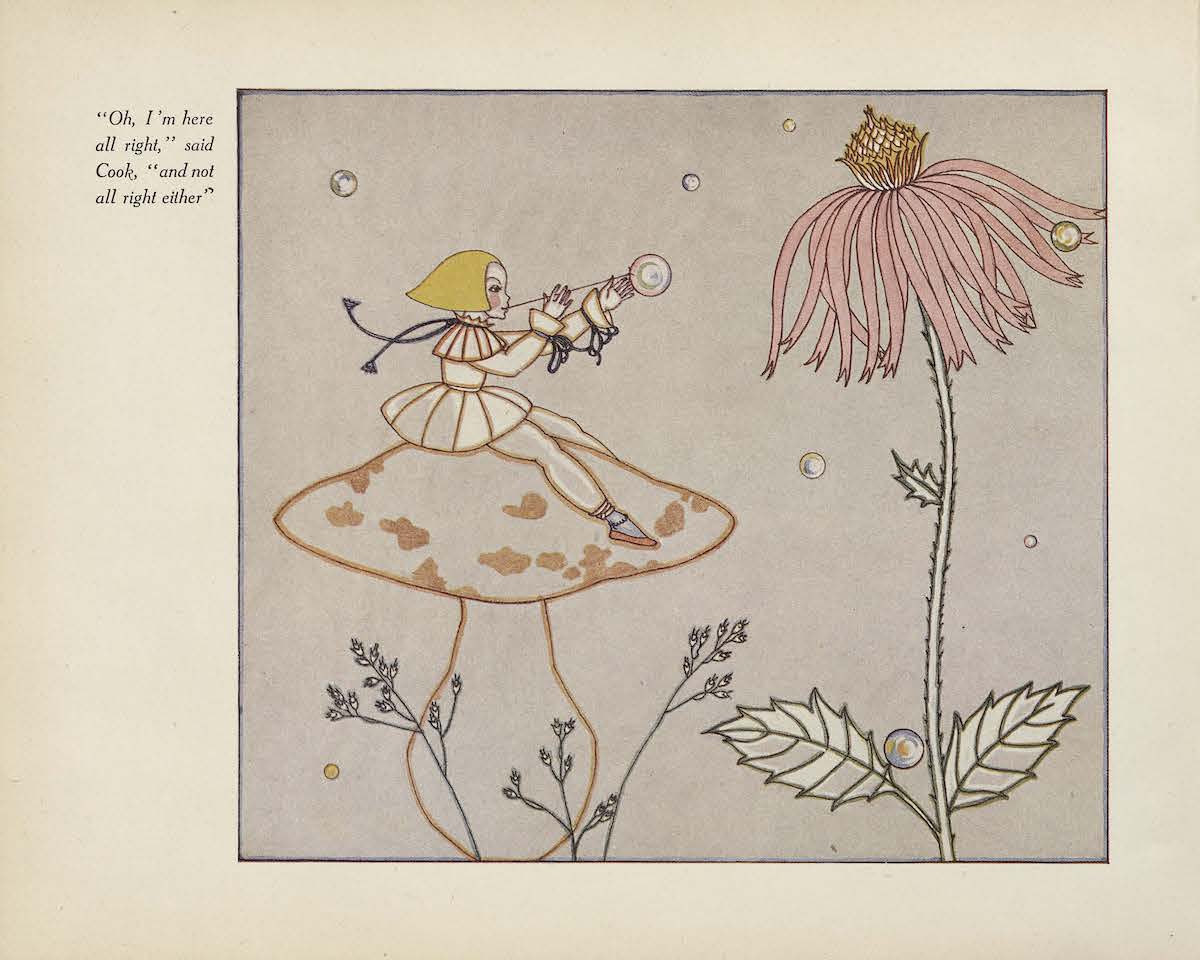
Page 50, illustration by Tom Seidmann-Freud
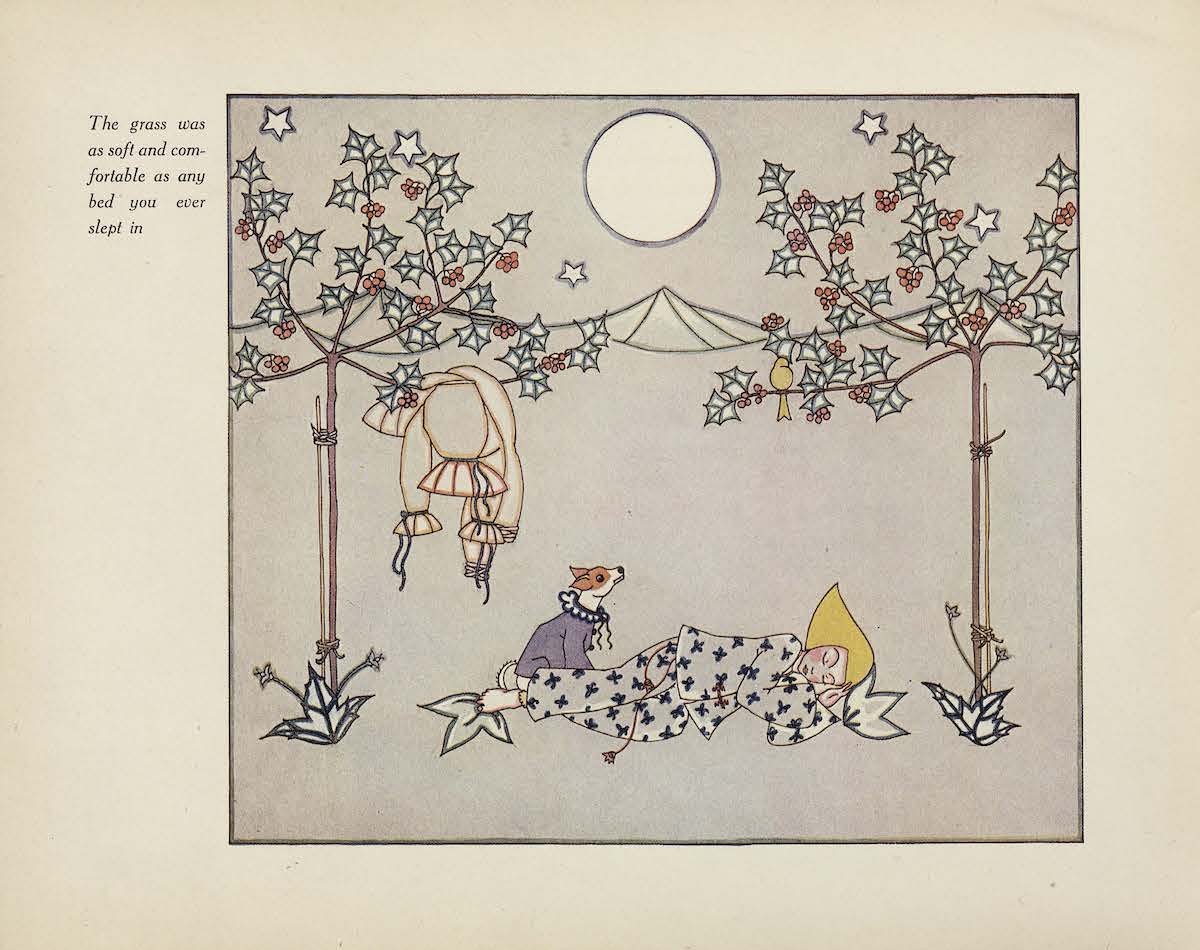
Page 64, illustration by Tom Seidmann-Freud
Would you like to support Flashbak?
Please consider making a donation to our site. We don't want to rely on ads to bring you the best of visual culture. You can also support us by signing up to our Mailing List. And you can also follow us on Facebook, Instagram and Twitter. For great art and culture delivered to your door, visit our shop.

